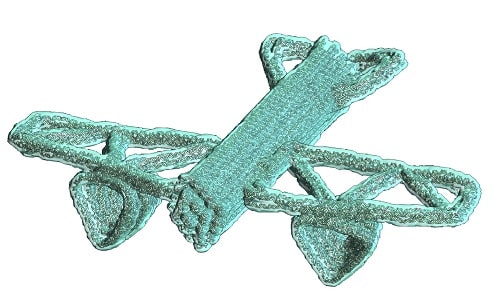With the help of a new software, medical researchers can now create more complex devices within a matter of few minutes

Thanks to increasing technological advances, the day is not far when tiny DNA-based robots and other nanodevices will deliver medicine inside our bodies and detect the presence of deadly pathogens.
Taking a big step towards that, researchers at Ohio State University have now developed a new tool that can design complex DNA robots and nanodevices in a fraction of the time. With the help of the MagicDNA software, researchers selected tiny strands of DNA and designed them into complex structures that comprised movable rotors and hinges for carrying out tasks such as drug delivery. Although this design process has been going for many years with slower tools and tedious manual steps, the current technique is a huge development. Now researchers can make much more complex and useful nanodevices.
“Nanodevices that may have taken us several days to design before now take us just a few minutes,” said Carlos Castro, co-author of the study and associate professor of mechanical and aerospace engineering at Ohio State.
“Previously, we could build devices with up to about six individual components and connect them with joints and hinges and try to make them execute complex motions,” said Hai-Jun Su, co-author of the study and professor of mechanical and aerospace engineering at Ohio State.
He further added, “With this software, it is not hard to make robots or other devices with upwards of 20 components that are much easier to control. It is a huge step in our ability to design nanodevices that can perform the complex actions that we want them to do.”
Two-Way Advantages
The software has various advantages that can help scientists design better, more helpful nanodevices while shortening the time required for everyday use.
One advantage is that the design can entirely be made in 3D. Earlier design tools only allowed creation in 2D, forcing researchers to map their creations into 3D. That meant designers couldn’t make their devices too complex.
The software also allows designers to build DNA structures ‘bottom-up’ or ‘top-down’. In the ‘bottom-up’ approach, individual strands of DNA can be organised into a structure that allows fine control over local device structure and properties. In the ‘top-down’ approach, the geometric shape of the device can be decided first and then DNA strands be put together using automation.
Combining the two allows the designing of geometrically complex shapes while maintaining precise control over individual component properties.
Another key element of the software is that it allows simulations of how designed DNA devices would move and operate in the real world.
“As you make these structures more complex, it is difficult to predict exactly what they are going to look like and how they are going to behave,” said Carlos Castro. “It is critical to be able to simulate how our devices will operate. Otherwise, we waste a lot of time.”
As a demonstration of the software’s ability, co-author Anjelica Kucinic, a doctoral student in chemical and biomolecular engineering at Ohio State, led the researchers in making and characterising many nanostructures designed by the software. Some of the created devices included robot arms with claws that can pick up smaller items and a hundred nanometre-sized structure that looks like an aeroplane (it is 1000 times smaller than the width of a human hair).
More multiple tasks can be carried out with one device. For example, a DNA robot after being injected into the bloodstream can detect a certain pathogen.
“A more complex device may not only detect that something bad is happening but also react by releasing a drug or capturing the pathogen,” he said. “We want to be able to design robots that respond in a particular way to a stimulus or move in a certain way.”
It is expected that soon in the future, the MagicDNA software will be available for use at universities and other research labs.
The research was supported by grants from the National Science Foundation and published in the journal Nature Materials.






